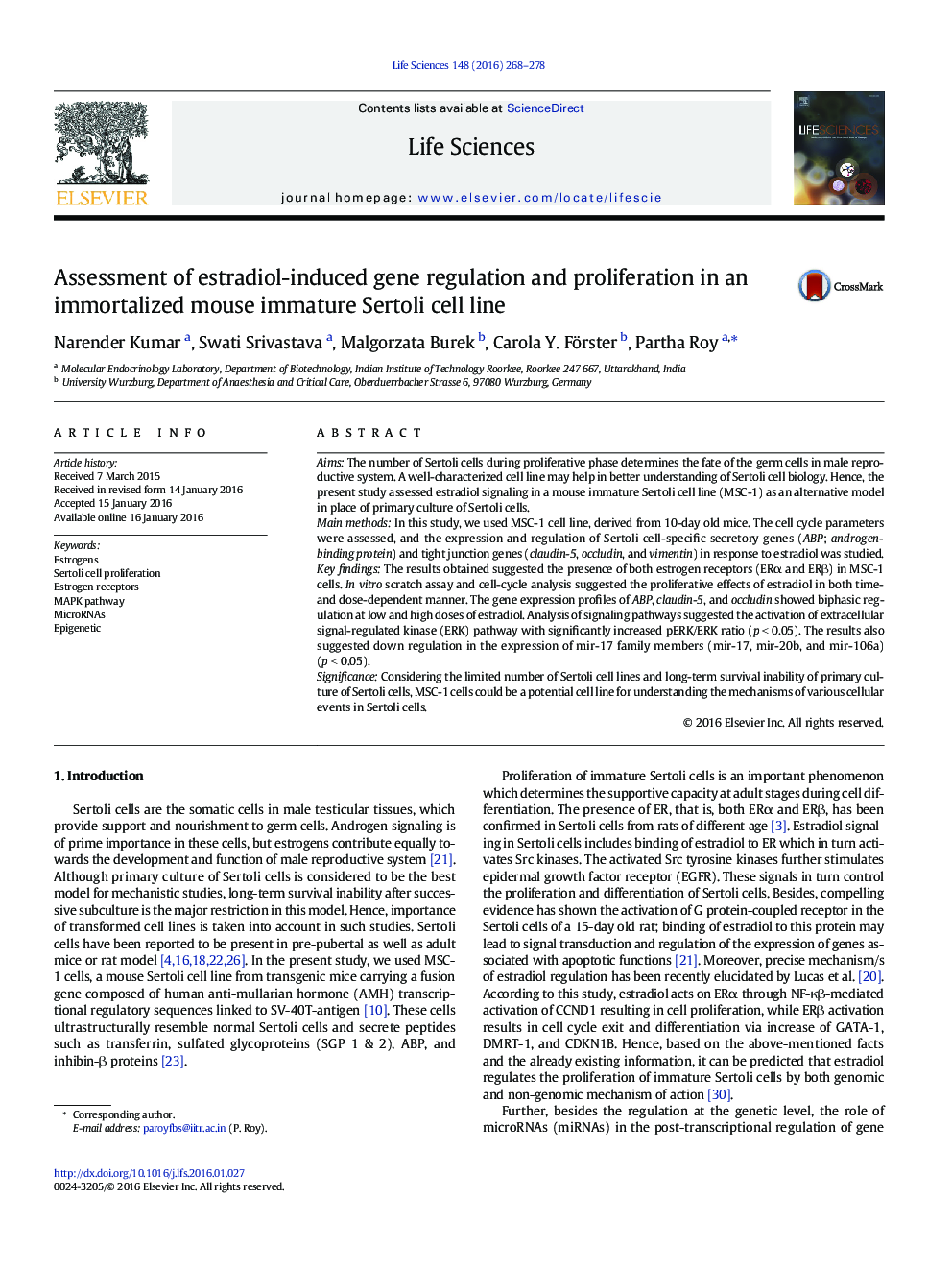| Article ID | Journal | Published Year | Pages | File Type |
|---|---|---|---|---|
| 2550758 | Life Sciences | 2016 | 11 Pages |
AimsThe number of Sertoli cells during proliferative phase determines the fate of the germ cells in male reproductive system. A well-characterized cell line may help in better understanding of Sertoli cell biology. Hence, the present study assessed estradiol signaling in a mouse immature Sertoli cell line (MSC-1) as an alternative model in place of primary culture of Sertoli cells.Main methodsIn this study, we used MSC-1 cell line, derived from 10-day old mice. The cell cycle parameters were assessed, and the expression and regulation of Sertoli cell-specific secretory genes (ABP; androgen-binding protein) and tight junction genes (claudin-5, occludin, and vimentin) in response to estradiol was studied.Key findingsThe results obtained suggested the presence of both estrogen receptors (ERα and ERβ) in MSC-1 cells. In vitro scratch assay and cell-cycle analysis suggested the proliferative effects of estradiol in both time- and dose-dependent manner. The gene expression profiles of ABP, claudin-5, and occludin showed biphasic regulation at low and high doses of estradiol. Analysis of signaling pathways suggested the activation of extracellular signal-regulated kinase (ERK) pathway with significantly increased pERK/ERK ratio (p < 0.05). The results also suggested down regulation in the expression of mir-17 family members (mir-17, mir-20b, and mir-106a) (p < 0.05).SignificanceConsidering the limited number of Sertoli cell lines and long-term survival inability of primary culture of Sertoli cells, MSC-1 cells could be a potential cell line for understanding the mechanisms of various cellular events in Sertoli cells.
